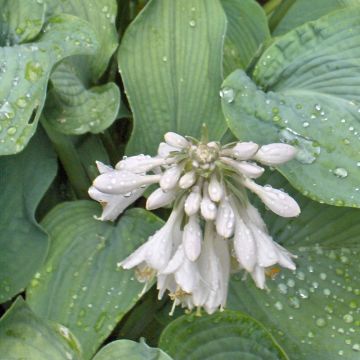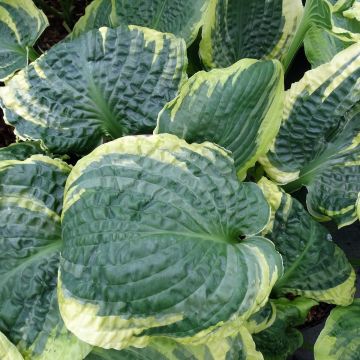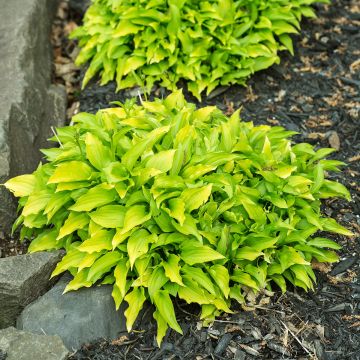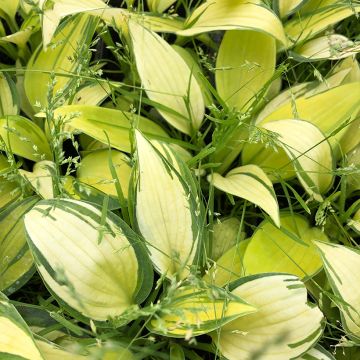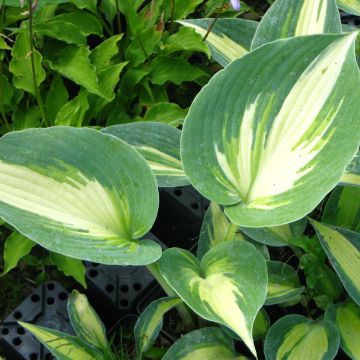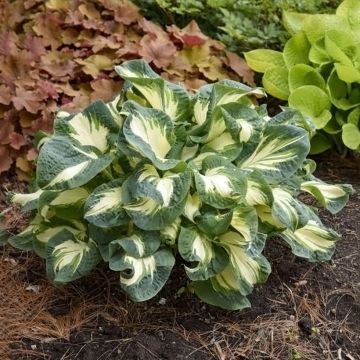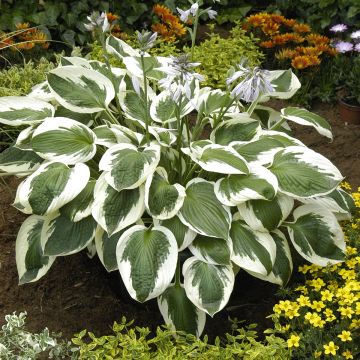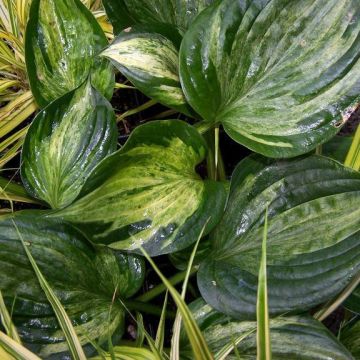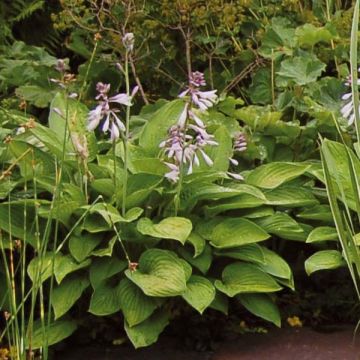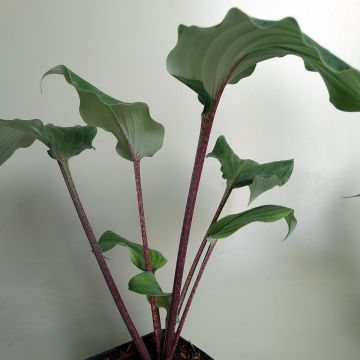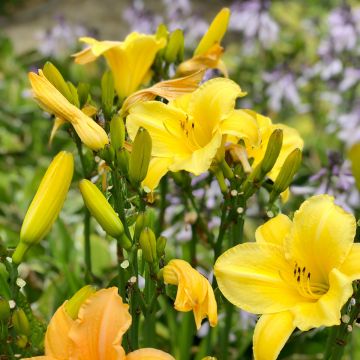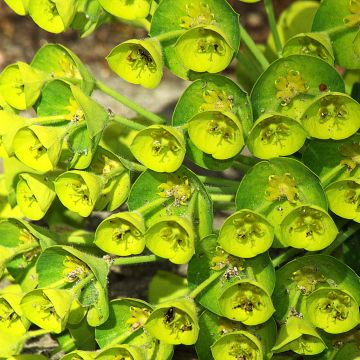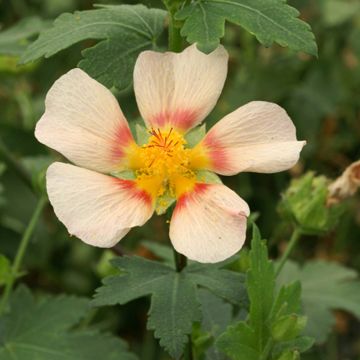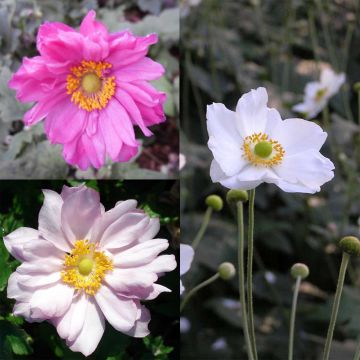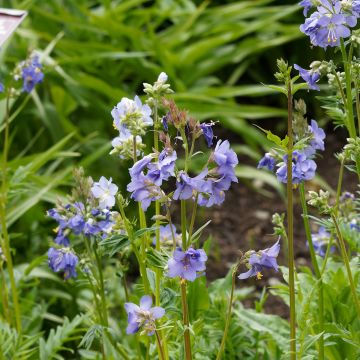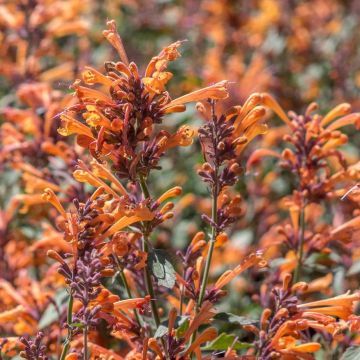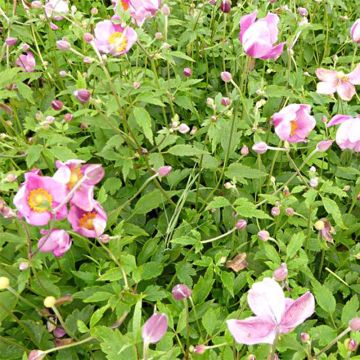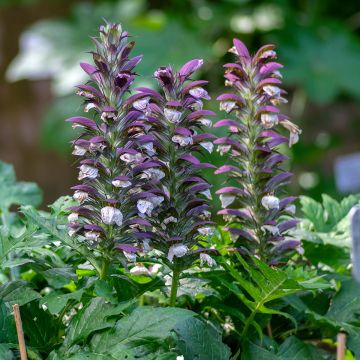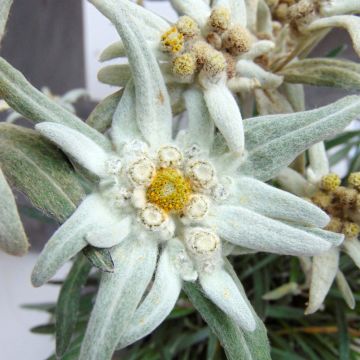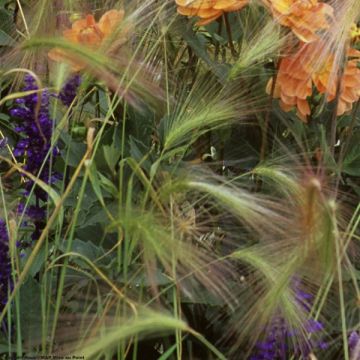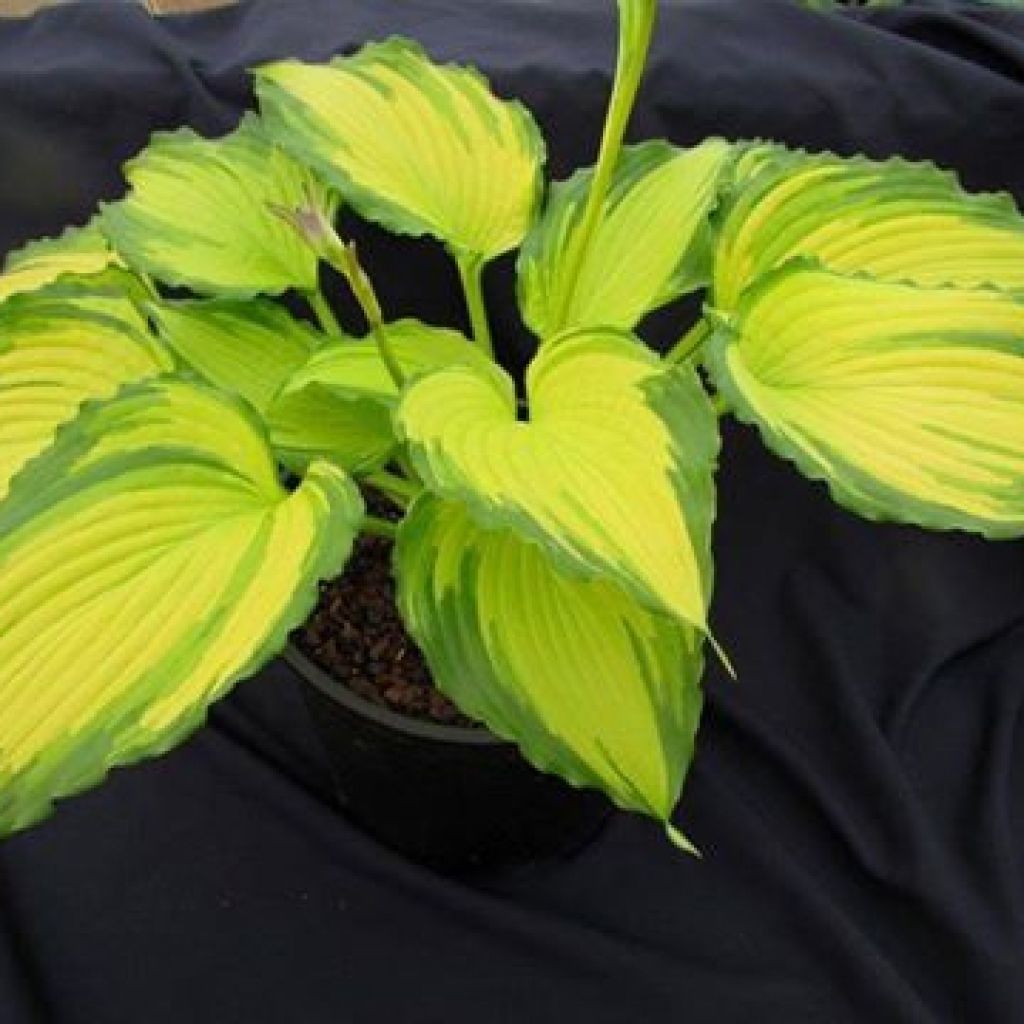

Hosta Amalia
Hosta Amalia
Hosta Amalia
Plantain Lily, Funkia
Good evening. I have this magnificent hosta for a year now, it was stunning until yesterday afternoon, truly magnificent but.... we had a big hailstorm, with hailstones about one and a half centimeters, which lasted for a good fifteen minutes and the entire garden is devastated. All my hostas have been shredded, frayed, shriveled, crushed, you name it... I must admit that this morning, with my spirits low, I forced myself to take a tour of the garden to see the extent of the damage because in the seventeen years we've lived here, I have never seen such carnage. So if someone can tell me how to revive torn hostas without having to cut everything, I would be grateful in advance.
Françoise Marie, 29/05/2023
This item cannot be shipped to the selected country
Delivery charge from €5.90
More information
Schedule delivery date,
and select date in basket
This plant carries a 12 months recovery warranty
More information
We guarantee the quality of our plants for a full growing cycle, and will replace at our expense any plant that fails to recover under normal climatic and planting conditions.
From €5.90 for pickup delivery and €6.90 for home delivery
Express home delivery from €8.90.

Does this plant fit my garden?
Set up your Plantfit profile →
Description
The Hosta 'Amalia' is a very beautiful variegated mutation of the Dancing Queen hosta. Vigorous, it displays large leaves with numerous small undulations on the edges, widely coloured in cream yellow, brighter yellow, and chartreuse in the center, irregularly margined with light to darker green. In summer, this perennial is adorned with lavender bell-shaped spikes that add to its charm. This particularly ornamental variety is a real asset to brighten up dark corners and offer astonishing contrasts in shaded and cool flower beds. It is also very beautiful in pots.
The Hosta or Funkia 'Amalia' is a very hardy deciduous perennial, whose above-ground growth emerges from the ground in spring. It belongs to the asparagus family. The plant, of fairly rapid growth, reaches 45-50 cm (18-20in) in height and 80 cm (32in) in width. It is a plant with good longevity. It develops ovate leaves with cordate bases, tapering to a point. Their lamina is marked by 6 pairs of deep veins. From the heart of its variegated foliage emerge, in July-August, tall flower stems of about 70 cm (28in) in height, bearing clusters of bell-shaped lavender flowers, with little fragrance.
Combine hostas with each other, marry them with ferns, seal of solomon, and other low ground-cover perennials such as bugleweeds, wood geraniums, and lamiums. They are all very effective as slug repellents. The silver Brunnera macrophylla 'Mr Morse, familiar in the undergrowth, will be excellent companions. Also consider Heucheras and their wonderful range of colors, or the delicate flowers of fairy bells (Epimediums). This will enhance the shaded and slightly damp parts of the garden, creating a pleasant haven of freshness for the summer. Hostas also thrive in pots, which should be placed in partial shade and watered regularly. Hostas go wonderfully well with spring bulbs, which they hide the absence of under their generous foliage! Around a pond, plant them with persicarias, carex, and astilbes. The blue-green foliage blends perfectly with the red and purple foliage of Japanese maples.
Important: Most of the species widespread in Western gardens have been introduced from Japan. Hostas are edible and are called "urui" in Japan, where they are commonly consumed.
Report an error about the product description
Flowering
Foliage
Plant habit
Botanical data
Hosta
Amalia
Liliaceae - Hostaceae
Plantain Lily, Funkia
Cultivar or hybrid
Other Hostas - Plantain Lilies
Planting and care
Hostas are planted in spring or autumn. Hostas prefer a deep, rich, humus-bearing, loose soil, preferably neutral to acidic (at least poor in limestone), moist to wet throughout the year. Install them in partial shade or dappled shade and in a location sheltered from strong winds.
Prepare a planting hole of 20 cm (8in) x 20 cm (8in) x 20 cm (8in). If your soil is heavy, mix half compost with crumbled soil, partially backfill and place your potted plant so that the top of the root ball is covered with 3 cm (1in) of soil. Adding a base fertiliser (dehydrated blood, horn powder) will nourish your plant during its rooting period without the risk of burning. Make sure to position the collar well above ground level. Firm the soil and water generously to eliminate air pockets. If the weather is dry, you will need to water regularly for a few weeks to facilitate the establishment of your plant. Also, water regularly in a dry summer.
With their common preference for humid places, slugs and snails never stray far from hostas. Even though blue or variegated hostas often have thicker and tougher foliage, which is less appetizing to slugs, these plants must be protected from gastropods. Protect your Hostas by surrounding them with ferramol-based granules (approved in Organic Agriculture), eggshells, coffee grounds, wood chips, or any dry and rough natural substance that repels them. Hedgehogs are gardeners' best allies in the fight against gastropods, as unlike chickens, they do not till the soil and do not attack the tender green shoots of young plants. Finally, some plants have a repulsive odour for slugs, such as wormwood and garlic.
Planting period
Intended location
Care
-
, onOrder confirmed
Reply from on Promesse de fleurs
Summer flowering perennials
Haven't found what you were looking for?
Hardiness is the lowest winter temperature a plant can endure without suffering serious damage or even dying. However, hardiness is affected by location (a sheltered area, such as a patio), protection (winter cover) and soil type (hardiness is improved by well-drained soil).

Photo Sharing Terms & Conditions
In order to encourage gardeners to interact and share their experiences, Promesse de fleurs offers various media enabling content to be uploaded onto its Site - in particular via the ‘Photo sharing’ module.
The User agrees to refrain from:
- Posting any content that is illegal, prejudicial, insulting, racist, inciteful to hatred, revisionist, contrary to public decency, that infringes on privacy or on the privacy rights of third parties, in particular the publicity rights of persons and goods, intellectual property rights, or the right to privacy.
- Submitting content on behalf of a third party;
- Impersonate the identity of a third party and/or publish any personal information about a third party;
In general, the User undertakes to refrain from any unethical behaviour.
All Content (in particular text, comments, files, images, photos, videos, creative works, etc.), which may be subject to property or intellectual property rights, image or other private rights, shall remain the property of the User, subject to the limited rights granted by the terms of the licence granted by Promesse de fleurs as stated below. Users are at liberty to publish or not to publish such Content on the Site, notably via the ‘Photo Sharing’ facility, and accept that this Content shall be made public and freely accessible, notably on the Internet.
Users further acknowledge, undertake to have ,and guarantee that they hold all necessary rights and permissions to publish such material on the Site, in particular with regard to the legislation in force pertaining to any privacy, property, intellectual property, image, or contractual rights, or rights of any other nature. By publishing such Content on the Site, Users acknowledge accepting full liability as publishers of the Content within the meaning of the law, and grant Promesse de fleurs, free of charge, an inclusive, worldwide licence for the said Content for the entire duration of its publication, including all reproduction, representation, up/downloading, displaying, performing, transmission, and storage rights.
Users also grant permission for their name to be linked to the Content and accept that this link may not always be made available.
By engaging in posting material, Users consent to their Content becoming automatically accessible on the Internet, in particular on other sites and/or blogs and/or web pages of the Promesse de fleurs site, including in particular social pages and the Promesse de fleurs catalogue.
Users may secure the removal of entrusted content free of charge by issuing a simple request via our contact form.
The flowering period indicated on our website applies to countries and regions located in USDA zone 8 (France, the United Kingdom, Ireland, the Netherlands, etc.)
It will vary according to where you live:
- In zones 9 to 10 (Italy, Spain, Greece, etc.), flowering will occur about 2 to 4 weeks earlier.
- In zones 6 to 7 (Germany, Poland, Slovenia, and lower mountainous regions), flowering will be delayed by 2 to 3 weeks.
- In zone 5 (Central Europe, Scandinavia), blooming will be delayed by 3 to 5 weeks.
In temperate climates, pruning of spring-flowering shrubs (forsythia, spireas, etc.) should be done just after flowering.
Pruning of summer-flowering shrubs (Indian Lilac, Perovskia, etc.) can be done in winter or spring.
In cold regions as well as with frost-sensitive plants, avoid pruning too early when severe frosts may still occur.
The planting period indicated on our website applies to countries and regions located in USDA zone 8 (France, United Kingdom, Ireland, Netherlands).
It will vary according to where you live:
- In Mediterranean zones (Marseille, Madrid, Milan, etc.), autumn and winter are the best planting periods.
- In continental zones (Strasbourg, Munich, Vienna, etc.), delay planting by 2 to 3 weeks in spring and bring it forward by 2 to 4 weeks in autumn.
- In mountainous regions (the Alps, Pyrenees, Carpathians, etc.), it is best to plant in late spring (May-June) or late summer (August-September).
The harvesting period indicated on our website applies to countries and regions in USDA zone 8 (France, England, Ireland, the Netherlands).
In colder areas (Scandinavia, Poland, Austria...) fruit and vegetable harvests are likely to be delayed by 3-4 weeks.
In warmer areas (Italy, Spain, Greece, etc.), harvesting will probably take place earlier, depending on weather conditions.
The sowing periods indicated on our website apply to countries and regions within USDA Zone 8 (France, UK, Ireland, Netherlands).
In colder areas (Scandinavia, Poland, Austria...), delay any outdoor sowing by 3-4 weeks, or sow under glass.
In warmer climes (Italy, Spain, Greece, etc.), bring outdoor sowing forward by a few weeks.

































